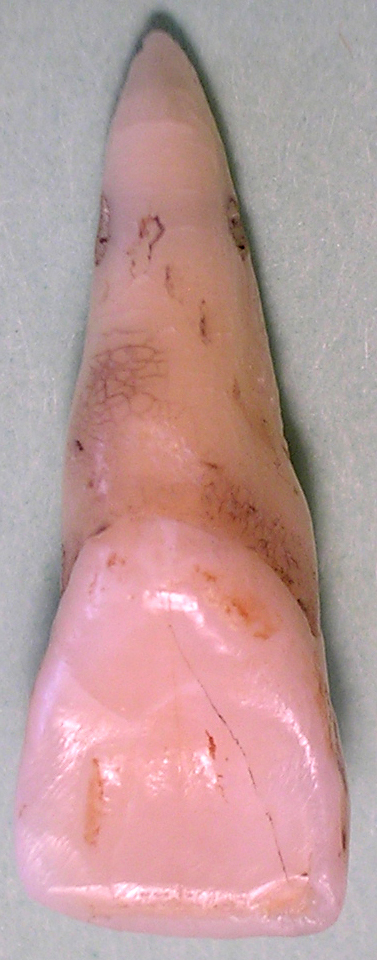|
Cingulum (tooth)
In dentistry, cingulum (Latin: girdle) is an anatomical feature of the tooth and referred to as the small raised area of an anterior tooth, including central incisors, lateral incisors and canines). It makes up the bulk of the tooth near the gum line and is located at the back (tongue side) of the tooth. The convexity of the cingulum from one side of the tooth to the other side resembles a girdle circling the back of the tooth at the cervical third of the anatomical crown. The cingulum represents the developmental lobes at the back of the teeth. The tooth crown develops from primary growth centres known as developmental lobes. Normal teeth generally consist of three to five lobes. In anterior teeth, generally the front side of the teeth develops from three lobes known as facial lobes while the back side of the teeth develops from one lobe known as the lingual lobe. The cingulum develops from the lingual lobe. As the tooth matures over time, the cingulum eventually becomes more defin ... [...More Info...] [...Related Items...] OR: [Wikipedia] [Google] [Baidu] [Amazon] |
